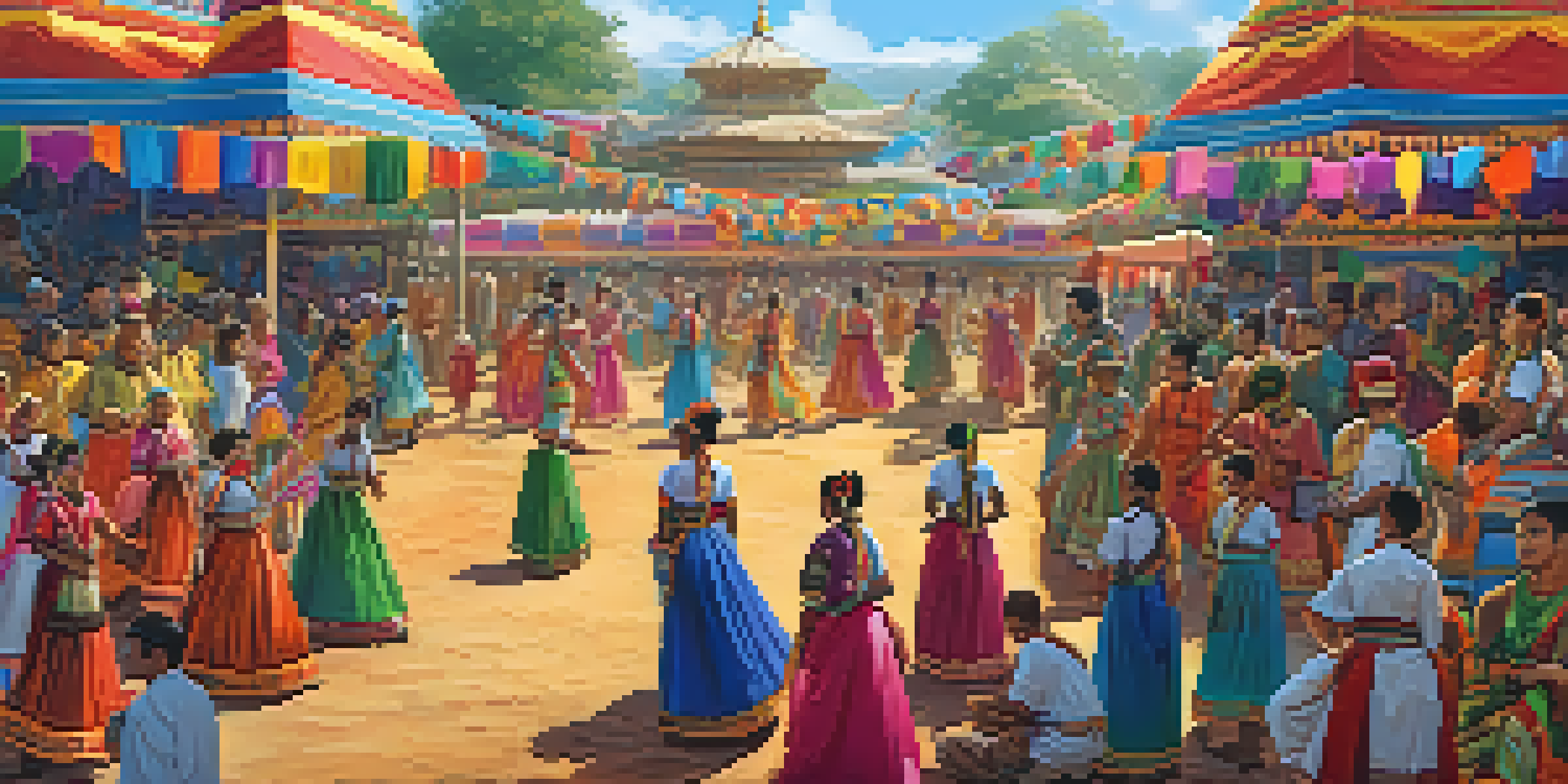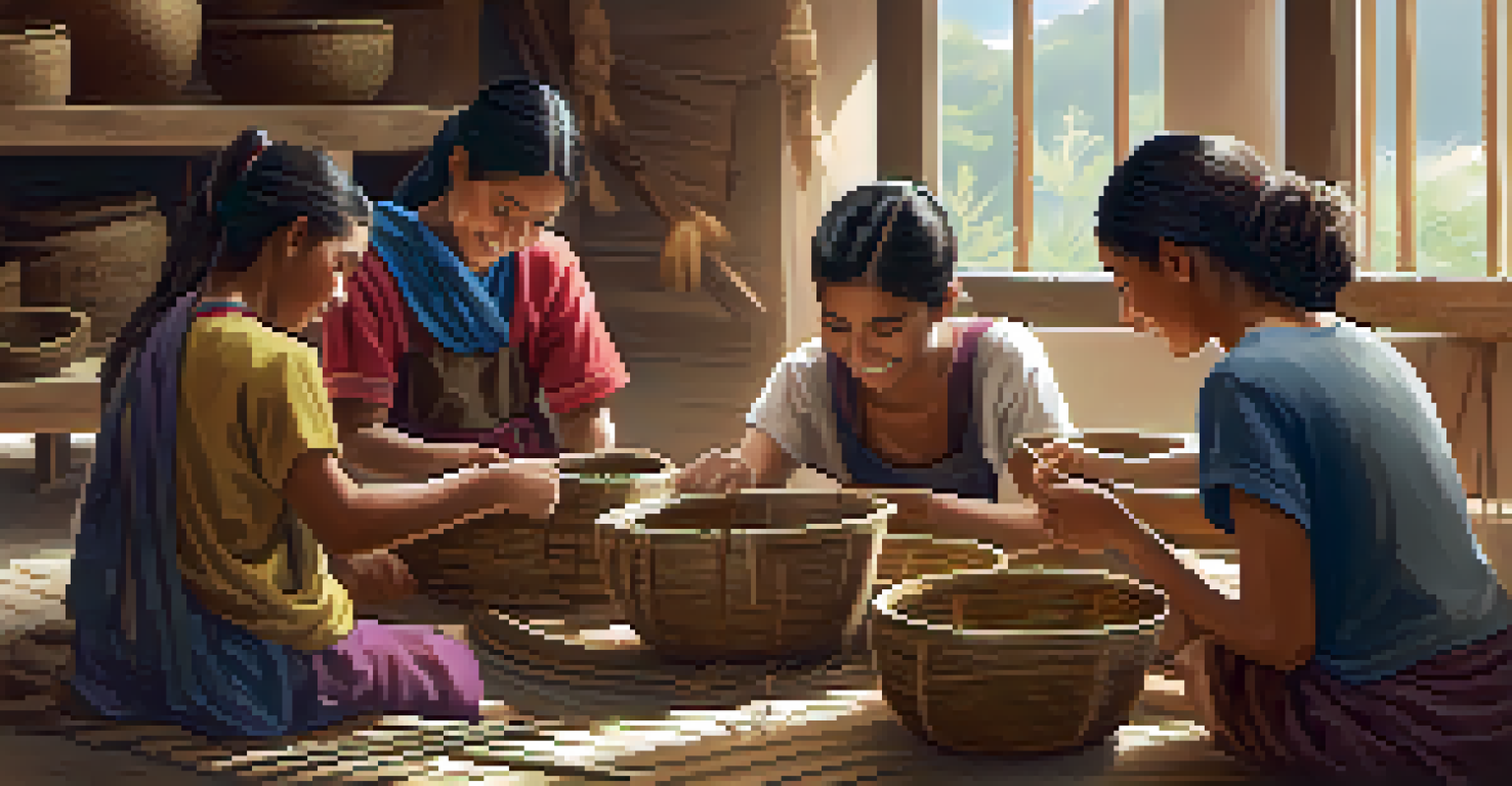The Role of Local Communities in Cultural Heritage Preservation

Understanding Cultural Heritage and Its Importance
Cultural heritage encompasses the traditions, languages, monuments, and artifacts that define a community's identity. It's like a rich tapestry woven from the threads of history, reflecting the values and beliefs of those who came before us. Preserving this heritage is crucial because it fosters a sense of belonging and continuity for current and future generations.
Cultural heritage is the foundation of our identity and the compass that guides our future.
Without cultural heritage, communities risk losing their unique identities, which can lead to homogenization in an increasingly globalized world. Think of it as a family recipe passed down through generations; when it's lost, so is the story behind it. This is why local communities play a vital role in safeguarding these irreplaceable elements.
Moreover, cultural heritage can have significant economic benefits, attracting tourism and boosting local economies. By preserving their unique stories, customs, and sites, communities can create a sense of place that draws visitors and fosters pride among residents.
Local Communities as Guardians of Heritage
Local communities are often the first line of defense in heritage preservation, acting as guardians of their own cultures. They carry the knowledge of traditional practices, languages, and customs that are essential to maintaining cultural identity. This grassroots involvement ensures that heritage is preserved in a way that is authentic and meaningful.

For instance, indigenous communities around the world have successfully fought to protect their lands and traditions from external threats. Their deep-rooted connection to the land gives them unique insights into sustainable practices that can preserve both the environment and their cultural heritage. This relationship nurtures a sense of responsibility and stewardship that is critical to preservation efforts.
Cultural Heritage Builds Identity
Cultural heritage is essential for maintaining a community's unique identity and fostering a sense of belonging among its members.
Additionally, local communities often engage in educational initiatives to pass down their cultural knowledge to younger generations. This education helps to instill pride in one’s heritage, ensuring that traditions continue to thrive in an ever-changing world.
Collaborative Efforts in Cultural Preservation
Collaboration between local communities and various organizations can amplify preservation efforts. Nonprofits, government agencies, and cultural institutions can provide resources and support, helping communities to protect their heritage more effectively. This partnership fosters a sense of shared responsibility and encourages diverse perspectives in preservation strategies.
Preservation of our cultural heritage is not a luxury but a necessity for the survival of our communities.
For example, community-led projects that involve local schools can create engaging programs that teach students about their cultural heritage. When young people are involved, they become passionate advocates for preservation, ensuring that their culture is celebrated and maintained. This synergy can lead to innovative solutions that might not emerge from a top-down approach.
Moreover, these collaborative efforts can also raise awareness about the importance of cultural heritage within broader society. By showcasing local traditions and stories, communities can inspire others to appreciate and engage with their rich cultural landscapes.
Challenges Faced by Local Communities
Despite their vital role, local communities often face significant challenges in preserving their cultural heritage. Economic pressures, urbanization, and climate change can threaten both tangible and intangible cultural assets. For instance, the destruction of historical sites due to development can erase centuries of history in mere moments.
Additionally, globalization can dilute local cultures, making it difficult for communities to maintain their unique traditions. As popular culture spreads, younger generations may gravitate towards global trends, often at the expense of their heritage. This shift can create a disconnect between generations, making it essential to find ways to bridge that gap.
Local Communities Drive Preservation
Local communities play a crucial role in safeguarding cultural heritage by actively engaging in preservation efforts and passing down traditions.
Support from external entities can help alleviate some of these challenges, but it must be approached with sensitivity to the community's needs and desires. Local voices must be prioritized to ensure that preservation efforts resonate and are sustainable in the long run.
The Role of Technology in Heritage Preservation
In today’s digital age, technology plays an increasingly crucial role in preserving cultural heritage. Communities can utilize digital tools to document and share their traditions, making them accessible to a wider audience. For example, virtual reality experiences can transport individuals to historical sites, allowing them to appreciate their cultural significance without physical travel.
Social media platforms can also amplify local voices, enabling communities to share their stories and engage with a global audience. This visibility can attract support for preservation initiatives and foster connections with others who share similar cultural experiences. It's like having a global stage for local stories.
However, while technology offers exciting possibilities, it also requires careful consideration. Communities must navigate the balance between sharing their heritage and protecting it from potential exploitation or misrepresentation. Responsible use of technology can empower communities while ensuring their stories are told authentically.
Engaging Youth in Cultural Heritage Activities
Engaging the youth in cultural heritage activities is a powerful way to ensure the continuity of traditions. Young people are the future stewards of their communities, and involving them in preservation efforts can instill a sense of pride and responsibility. Whether through workshops, festivals, or storytelling events, these activities can spark interest and passion for cultural heritage.
For instance, programs that involve youth in traditional crafts or performances can create lasting connections to their culture. Imagine a group of teenagers learning to weave baskets or perform folk dances; not only are they gaining skills, but they’re also forging a personal relationship with their heritage. This hands-on experience is invaluable.
Technology Enhances Heritage Sharing
Digital tools and platforms allow communities to document and share their cultural heritage, making it accessible to a wider audience while promoting responsible use.
Furthermore, youth engagement can lead to innovative ideas for how traditions can evolve while remaining rooted in their cultural significance. By embracing both the past and the present, communities can cultivate a vibrant cultural landscape that respects history while looking toward the future.
Celebrating Cultural Heritage Through Festivals and Events
Festivals and cultural events are excellent opportunities for communities to celebrate and showcase their heritage. These gatherings not only bring people together but also educate attendees about local traditions and history. It's like a living museum where stories come to life, allowing both locals and visitors to experience culture firsthand.
Moreover, such events can foster community pride and cohesion, reinforcing social bonds among residents. When individuals come together to celebrate their shared heritage, it strengthens their collective identity and promotes a sense of belonging. Think about local fairs featuring traditional food, music, and dance; these experiences create lasting memories and connections.

Additionally, cultural festivals can attract tourism, providing economic benefits that can be reinvested into preservation efforts. By highlighting their unique heritage, communities can inspire others to appreciate and participate in preservation initiatives, ensuring that their culture remains vibrant for generations to come.